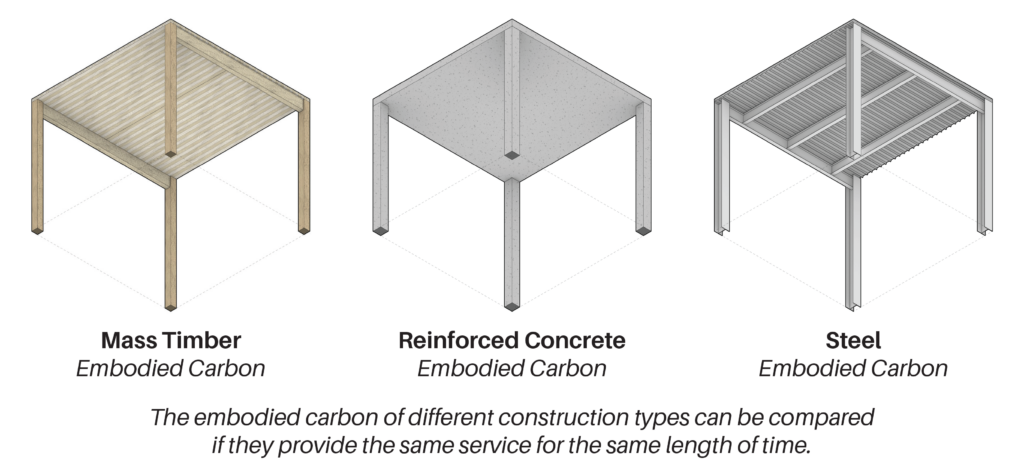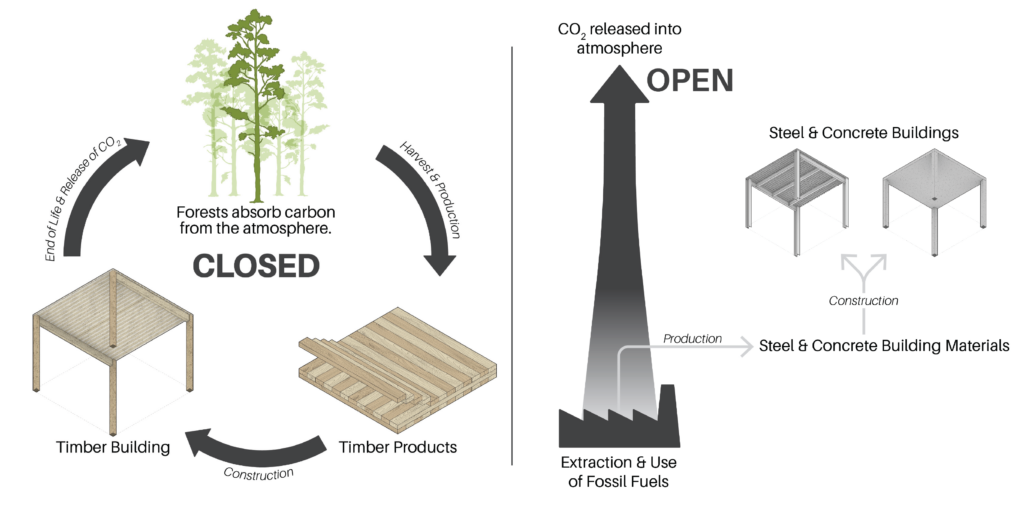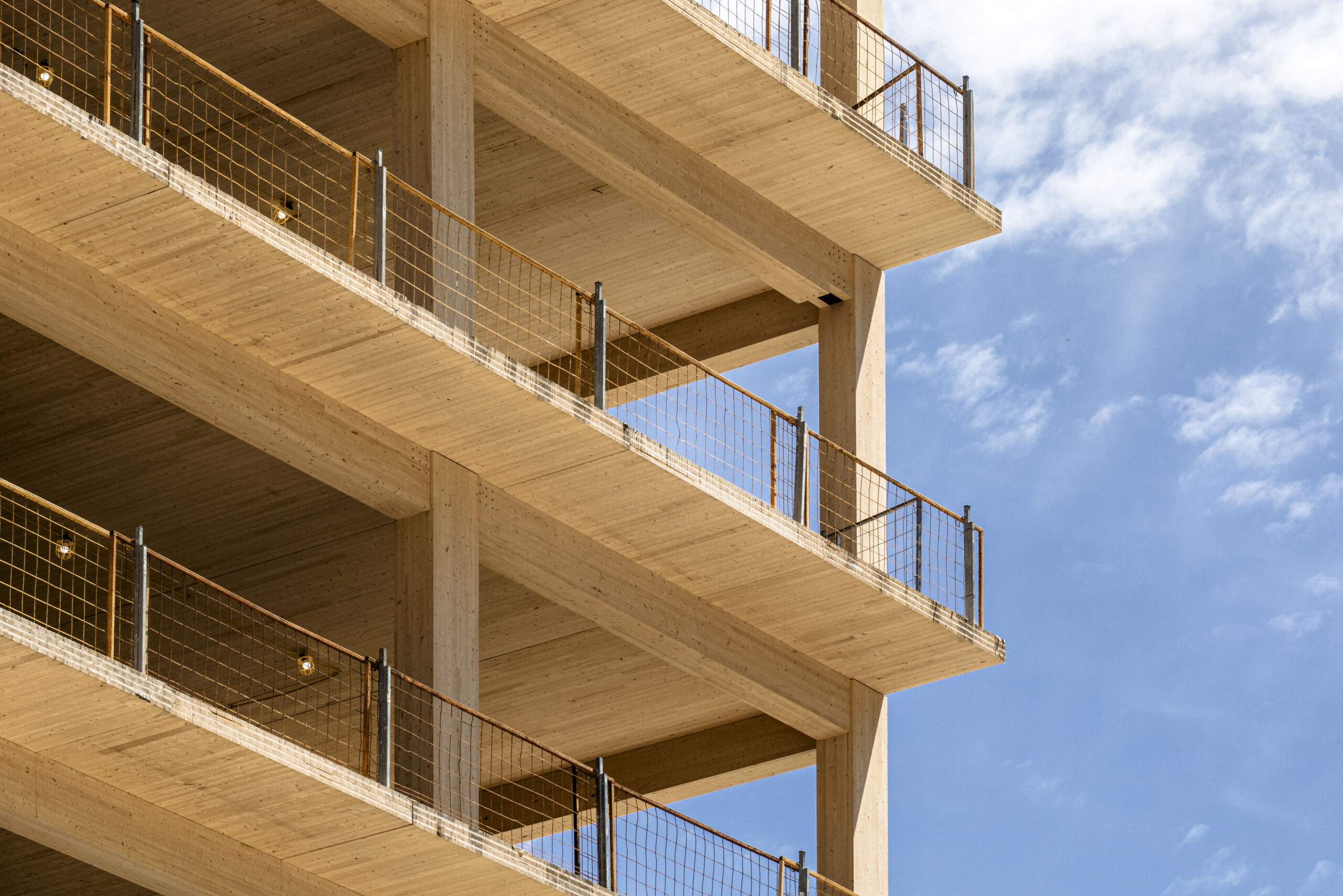Mass Timber is a modern reimagination and expansion of the traditional construction material of Heavy Timber. Its present-day form is a category of wood products created by fastening or bonding smaller pieces of wood together. The world of Mass Timber contains a wide range of products capable of accomplishing a variety of structural demands. Mass Timber products are replacing traditional reinforced concrete and steel structures as the industry continues to evolve. This rethinking of building structures through Mass Timber brings with it the many advantages the wood product offers. Mass Timber meets, and sometimes exceeds, the performance demands of other structural materials, even in cases of fire, seismic, and wind events. Mass Timber’s lighter environmental footprint and light weight give it an advantage over carbon-intensive and heavier products such as concrete and steel. The prefabricated nature of Mass Timber lends itself to faster and more efficient construction speeds. The characteristics of wood products also allow for better thermal performance, and their biophilic qualities have even been shown to improve well-being.
One of the main attributes that gives wood products a leg-up on other structural materials is its regenerative quality. Unlike concrete and steel, wood can be grown by implementing sustainable forestry practices. This regenerative quality makes Mass Timber a prime candidate to become the leader in sustainable building materials. When examining the sustainability factor of Mass Timber, it is helpful to understand some key terms and concepts:
Embodied Carbon: The embodied carbon represents the emissions associated with physical materials through their extraction, production, construction, and disposal. Unlike the operational carbon of a building, whose impacts can fluctuate, embodied carbon impacts are immediate and permanent. The embodied carbon of different materials can be compared if they have the same functional equivalency – meaning if they provide the same service for the same length of time.

Biogenic Carbon Cycle: The cycle plants go through of continuously exchanging carbon with the atmosphere through an uptake during photosynthesis and a release during decomposition or burning. For mass timber products, the biogenic carbon cycle starts when the tree is harvested; at this point, a tree contains approximately 50% carbon by mass. This carbon, referred to as sequestered carbon, is held until the mass timber reaches its end-of-life in the building and is either buried in a landfill, burned for energy, recycled, or reused.
Understanding those terms, we can examine the sustainability of Mass Timber products compared to other building materials. Mass Timber has the least embodied energy of all primary building materials. This means that, from the material’s harvest, it requires less energy to transport, manufacture, install, maintain, and dispose of or recycle. Additionally, Mass Timber has lower embodied carbon than materials such as steel, cement, and glass because it takes far less energy to manufacture. Other building materials often require temperatures up to 3,500°F, which are achieved using large amounts of fossil fuel energy.
Through the biogenic carbon cycle, Mass Timber products act as a storage mechanism of carbon. Through this carbon sequestration, mass timber construction is preventing the release of carbon into the atmosphere for the lifetime of the structure. The forests that supply raw materials for mass timber construction and carbon sequestration are a closed-loop cycle of absorbing, storing, and releasing carbon. This closed system differs from the “open” or one-way flow of fossil carbon, which is typical when resources are used up. Currently, the most common building materials of concrete and steel are unable to escape this open flow of carbon due to their reliance on fossil fuels for their production.

Cutting down trees may seem heretical to sustainability. However, demand and robust markets for wood products only encourage forest owners to keep their lands as forest (instead of clear-cutting for farmland or pasture) and invest in practices to keep trees healthy. Furthermore, harvesting and replanting increases a forest’s carbon sink potential because the carbon sequestration rate is greater during the stages of young, vigorous growth. Active forest management (which includes forest thinning) mitigates wildfires, cuts carbon emissions, replenishes waterways, expands wildlife habitats, and creates jobs in rural areas. The sustainability of mass timber rests on the sustainability of our forest practices. Thankfully, modern forestry standards ensure a continuous cycle of growing, harvesting, and replanting.
By replacing the more conventional building materials of steel and concrete with Mass Timber, the construction industry can unlock a new tool for sustainability. The most exciting part about Mass Timber’s sustainable qualities is that they go beyond the boundaries of the building itself. From the point of its harvest in the forest, Mass Timber products are already proving their sustainability by capturing carbon, requiring a lighter production process, and storing carbon for the entirety of a building’s lifetime. Because of this reach beyond the building itself, we should note that Mass Timber’s sustainability is only as successful as the sustainability of our forest practices.




